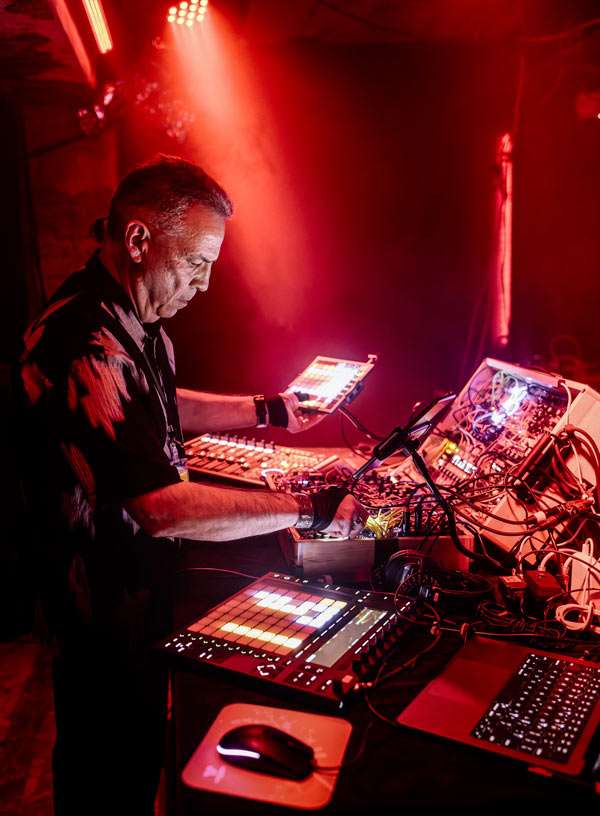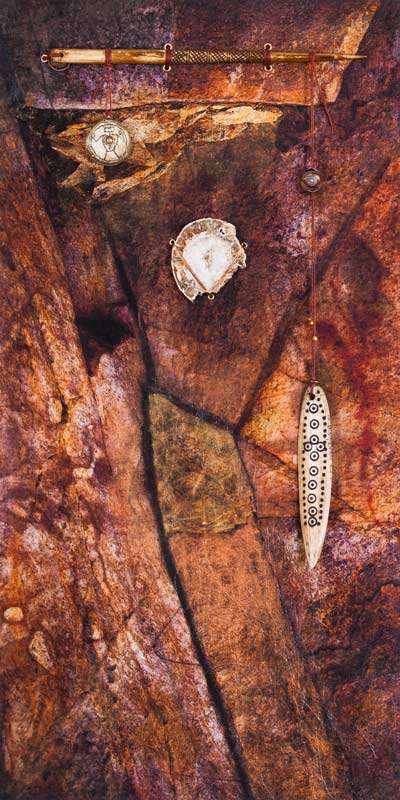Meet Chris Meyer
Alias Zone is Chris Meyer of LearningModular.com. He fell in love with electronics by the age of 6, and with electronic music by the age of 10. As a teenager in the 1970s, Chris took lessons on piano, bass, and modular synthesizers, wanting to learn how to emulate the music he heard on albums by Tangerine Dream, Klaus Schulze, Michael Hoenig, Wendy Carlos, Larry Fast, and others.
Not wanting to be just another starving musician, Chris hatched a plan to get an engineering degree so he could afford these toys. But just a year out of college, he landed a job with synthesizer manufacturer Sequential Circuits, where he worked on numerous instruments and created a technique known as Vector Synthesis. He went on to work for Digidesign, Marion Systems (Tom Oberheim), and eventually became chief engineer at Roland R&D US. On the side, Chris taught synthesis at UCLA Extension, wrote numerous articles for Music Technology Magazine plus a column for Keyboard, and was technical chairman of the MIDI Manufacturers Association where he created and championed numerous extensions to the MIDI specification.
In addition to designing instruments, of course Chris also used them, playing with Richard Bugg’s ensemble Cosmic Debris in the Los Angeles area in the 1990s. He took his favorite performances with this ensemble and reworked them to release the first Alias Zone album – Lucid Dreams – in 2001. It debuted at #1 on the relevant college radio charts, and went on to win the AFIM award for best independent electronic/new age release in 2002.
By then, Chris had moved from the music industry to creating graphics for video and film. This distraction eventually pried him away from music until 2015, when he asked himself what did he enjoy most in life? The answer: creating new sounds.
Chris embarked on his return to music by creating Learning Modular to teach others how to use modular synthesizers. Originally creations of the 1960s and 70s, modular synths were back in vogue, but few musicians had a solid grounding in the fundamentals of how to use them. This work eventually led to Chris co-authoring with Kim Bjørn the now-classic book, Patch & Tweak: Exploring Modular Synthesis.
Chris is creating music again, still under the name Alias Zone. Today he is primarily a solo act, with the modular synthesizer being the core of his personal “orchestra” combined with other electronic and acoustic instruments. The result is a fusing of the past and future into brand-new synthetic yet still organic soundscapes, each with an underlying story.
Meet the Alias Zone “Orchestra”
Learn more about the instruments Chris uses to create his unique blend of sounds.
Interview with Steve Roach
Steve Roach interviewed Chris as part of SoundQuest Fest 2021, discussing Chris’ approach to composition.
What is the “Alias Zone”?
When sound is converted to a digital format and played back, two versions of the sound now exists: the normal version we are used to hearing, and an “alias” of it that resides higher in frequency than the original sound, with the arrangement of its harmonics (the basic components of a sound) turned upside-down.
We often don’t hear this ghost-like alias. But sometimes, it exists on the subliminal edge of our hearing; other times, it harshly dominates the original sound. The “alias zone” is the border between this alternate reality and the original version.
Chris likes to explore the alias zone when composing music. He starts with a sound that catches his ear – it may be an Aztec poem, a cold war spy broadcast, an experiment on his modular synthesizers, a particular rhythmic pattern, or even something as simple as a terra cotta pot being struck. From this, Chris builds a story, researching the background of the sounds, and conjuring his own alternate or “alias” narratives to flesh out the new sonic worlds he creates.
Parts are composed, rehearsed, and arranged into a linear story arc, which is then usually performed straight through – either live, or on video as part of a webcast concert – instead of the usual studio practice of adding a layer at a time. These pieces are then edited, mixed, and lightly overdubbed to create the final compositions you hear.


